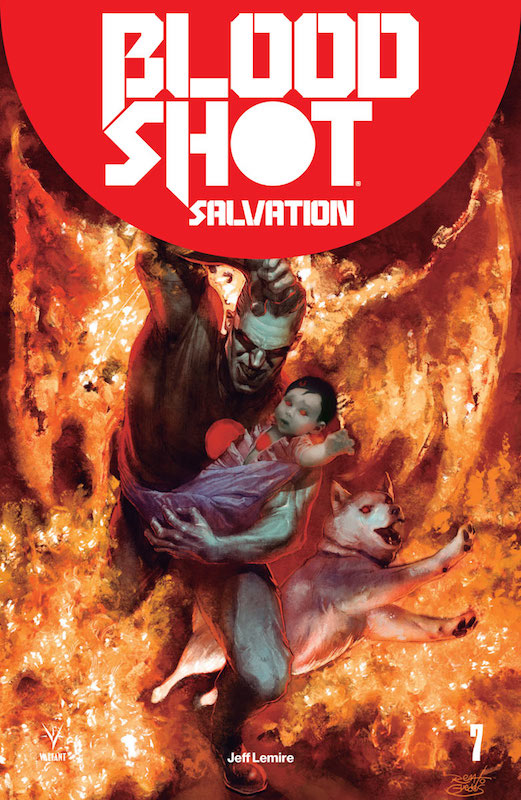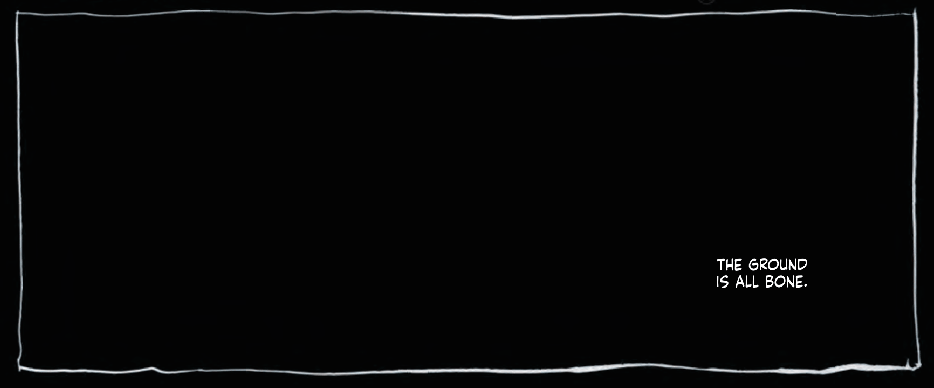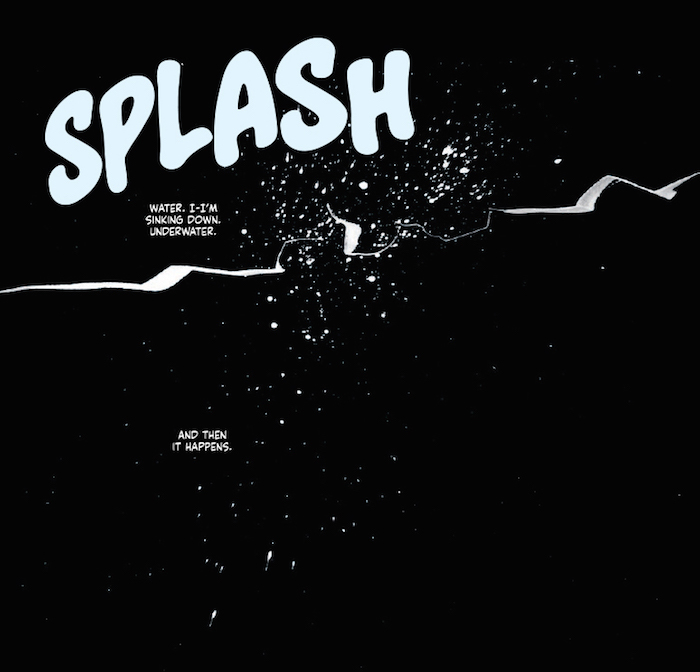Bloodshot Salvation #7
Jeff Lemire (writer, illustrator)
Valiant
March 7th 2018
Ohhh hey now, Valiant is being cute again!
Bloodshot #7 is an issue during which Bloodshot, about whom I can tell you nothing more than his name, is temporarily blinded. It is an issue told almost entirely in black ink: nothing drawn in any panel, until the final page. Just black page after black page after black page. It is a very interesting read.
Occasionally I will view or insert myself into questions of “what is a comic,” because I enjoy that kind of irritant. Does it need to have pictures? Does it need this or that? Someone will bring up Alpha Flight #6—here is an excellently uppity Busiek-led discussion, for a prime example.
The climactic fight scene of Byrne’s Alpha Flight #6 takes place within a snowstorm and is told through panel division, narrative caption, and speech bubble content, design and placement. I love it. This is essentially the same route as taken by Jeff Lemire in Bloodshot #7, though Lemire takes it much further, extending the rhythm performance to fill the entire issue. Both Byrne and Lemire are practicing cartoonists, as well as both regularly working in creative teams; both Byrne and Lemire take a cartoonist’s responsibility (and solo credit) for their picture-less sequences, defining the layouts and marking the panels themselves. Renato Guedes, the regular artist on Bloodshot Salvation (and quite a marvellous one) isn’t credited in press materials for this issue, though he provides a final page spread after Bloodshot and his nanites recover. Lemire chose to take over the practical visual duties for the issue, an auteur move, instead of directing Guedes as a layout drafter in the more common way of direct market comics (where “writer” and “artist” are separated into two definitive roles yet “art” and “layout” are rent somewhat asunder by scripts asking for this panel, this panel, this panel, pageturn).
A cartoonist, like Byre or Lemire, is used to understanding the comic as a spun whole, giving no more or less credit to either “side” of their duties. This may be necessary for the production of a formally challenging comic— perhaps pushing the boundaries of formal definition, asking “what makes a comic a comic?”, leaves no room for blurred role definition among the creative forces.
That said, Michael Higgins’ lettering on Alpha Flight #6—I wonder if he got instructions on where to place it? Bloodshot Salvation #7’s letterer is Simon Bowland; inquiries on that are subject are pending.
The comic begins with two black pages. The eye, drawn by the diagonal sequence of caption and speech bubble, travels them quite agreeably. On page three Bloodshot finds a few of his bearings, and panels begin to appear. Scratchy, feather-pen border lines in white, dividing blind blackness from blind blackness. Bloodshot has mentioned his “nanites” not working, so I suppose he is some sort of cyber zombie who needs minute computers to see. It doesn’t matter what he is, really, because the sensual enjoyment of this issue is gleaned in implication not image; in sharing, by choice, the ignorance its protagonist finds forced upon him. Bloodshot is a man cradling a baby, holding a gun, and talking to a dog. His dog is called “Hound,” which one might presume is short for “Blood Hound.” That is also a cute thing about this comic. Because that’s a dog breed, and the owner’s called Bloodshot, and it meshes. I think this stuff is why people like John Wick? The baby is called Jessie. He will protect her, because he is her daddy. He tells her so.
Sometimes people say “show don’t tell” and that’s fine and all. But sometimes telling ostensibly because you can’t show is a very effective way of engaging your audience.
Bloodshot (with Jessie, and Hound) is stuck in some sort of empty, silent hellscape that he can’t see. It’s a visual medium, let’s cry! Comics must have pictures! Sure, sure, we all like pictures. We like drawings or imagery to be present. You know what emphasises presence? Absence. Can you see something non-visual? If you can see something, mustn’t it be visual? The visual representation of absence is a very fine thing indeed. It creeps under your nails and you start to breathe it in.
Maybe there could have been more of a representative aspect to “I hear my footsteps bouncing off walls.”
Something nasty moves against his legs and the panel outlines, those touchstones of time and the passage of moment, get a little wonky. Like a camera swinging wildly in a Blair Witch video. Or like decisive editing in a close-up scene where a character must come to terms with something shocking? Does it mean “this is how he’s moving” or “this is how he’s feeling? It means “internal events are currently being defined by their irregularity.” Six tight, even rectangles with better refined angularity but far jerkier control within that refinement show us the (superhero? Mercenary? Whatever Bloodshot is) taking control despite stress under fire. Then when he stumbles into water the white line is angled across the top of the page, choppy and spattered, the surface of the volume he’s fallen into.
This is the halfway point of the comic, from which it continues to unfurl both layout and panelwise. I’d prefer not to take the joy of it all from you. In the final four or five pages Bloodshot’s vision begins to blink back in, preparing for the final page in full, lush colour; Lemire makes the choice not to represent anything within these momentary returns, though Bloodshot’s dialogue claims that he has “seen” something— the reader sees only TV static, but we’re sympatico enough with this internal monologue, well enough used to mind’s-eyeing the things he’s touching and fearing, that we can accept he got a blink of something . . . and that that feeling of somethingness that would be spoilt it if were set down in literality for us.
Frankly I would have been happy enough with no return to regular representation (by Renato Guedes, uncredited in the solicit information) by the end of this issue, though I do appreciate Bloodshot’s long nose, his protruding ears, and how they make his thick neck mean a little more than just “comic book (anti?)hero guy.” I like seeing that BloodHound has a little red circle where his collar tag should be, like Bloodshot’s red circle logo. And the texture of the rendering is very pleasant.
This issue succeeds in making Bloodshot, a big red-eyed white-skinned side o’beef with combat trousers and a gun, feel vulnerable enough to be accessible, and whether or not you’re interested in becoming a regular Valiant reader it’s certainly an issue worth reading for the formal challenge alone.






